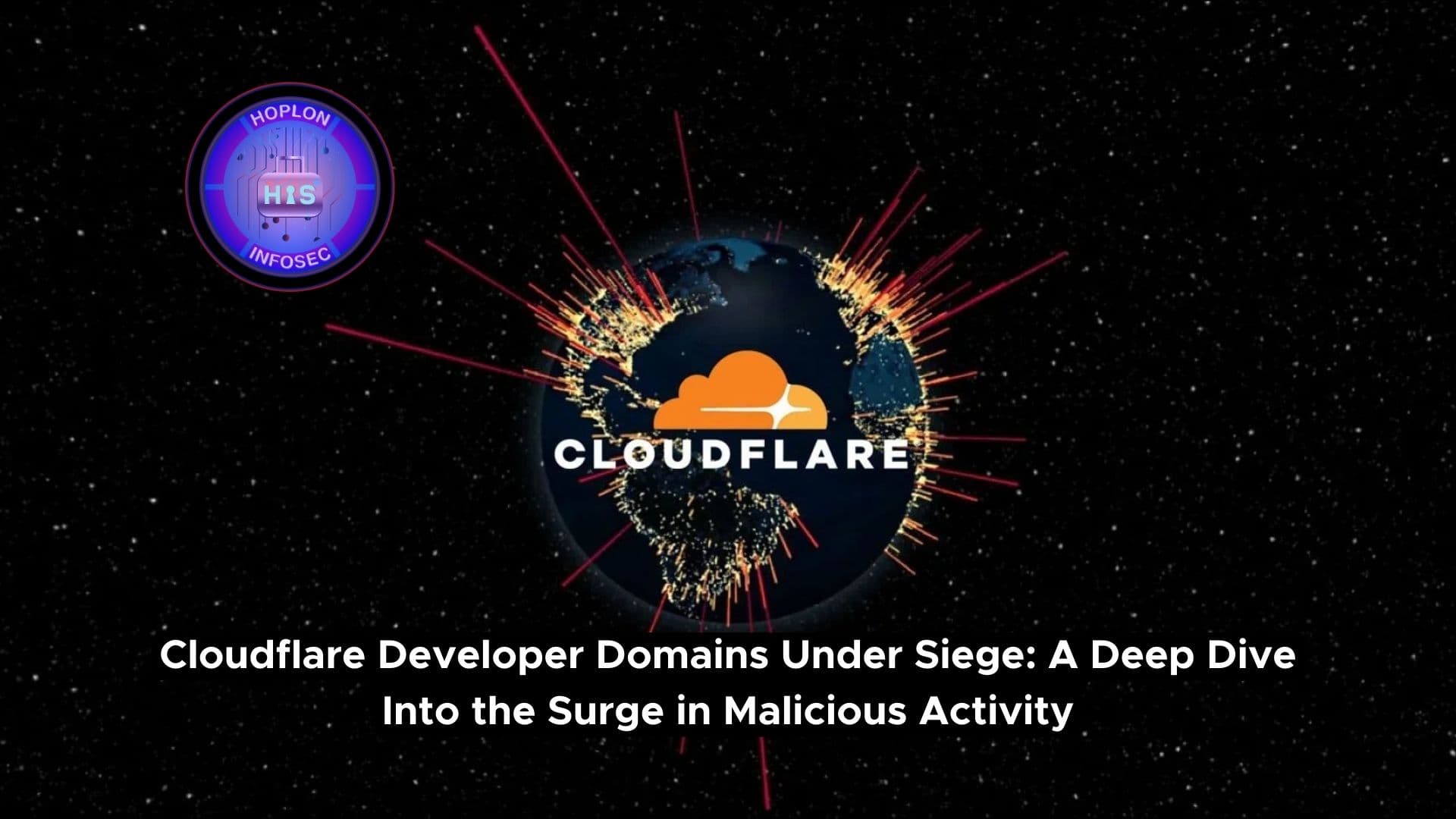Cloudflare Developer Domains Under Siege: A Deep Dive Into the Surge in Malicious Activity

Hoplon InfoSec
04 Dec, 2024
The trusted and widely used developer platforms offered by Cloudflare Developer Domains, specifically Cloudflare Pages and Cloudflare Workers, have become a hotbed for malicious activities orchestrated by cybercriminals. According to a detailed report by security analysts at FORTRAN, threat actors abuse these services for phishing, data theft, and other malicious endeavors.
Recent trends reveal alarming growth in the misuse of Cloudflare’s platforms, highlighting the sophistication and determination of modern cybercriminals. This article will explore the disturbing statistics, dissect the tactics employed, and provide actionable strategies for developers and users to safeguard themselves.
The Alarming Rise in Malicious Activity with Cloudflare Developer Domains
The abuse of Cloudflare’s infrastructure has escalated dramatically in recent times. As of mid-October 2024, the following trends have been observed:
Phishing Attacks on Cloudflare Pages
Phishing attacks on Cloudflare Pages have surged 198% between 2023 and 2024. This platform, designed for seamless web deployment, is being exploited to host deceptive pages that trick users into revealing sensitive credentials.
Abuse of Cloudflare Workers
Cloudflare Workers, a platform offering serverless computing, experienced a 104% increase in phishing incidents during the same period. The service’s flexibility and scalability make it an attractive target for cybercriminals aiming to distribute their campaigns effectively.
These statistics underscore the growing threat to developers and end-users, necessitating heightened awareness and proactive measures.
Techniques Employed by Threat Actors
Attackers have innovated ways to exploit Cloudflare’s features for their malicious campaigns. The following tactics are prevalent:
Phishing Redirects
- Cloudflare Pages are being used to host redirect links that guide victims to phishing sites designed to steal credentials or personal data.
- These redirect pages often appear harmless, leveraging Cloudflare’s reputation to gain user trust.
Fake Human Verification Pages
- Malicious actors use Cloudflare Workers to create fake “human verification” pages.
- These pages mimic legitimate verification processes to trick users into sharing sensitive information.
Email Concealment with BCC Foldering
- Cybercriminals are employing BCC (Blind Carbon Copy) folding techniques to mask the accurate scale of phishing campaigns, making them harder to detect by victims and automated security systems.
Why Cloudflare Is a Prime Target
Cloudflare’s services offer numerous features that appeal to developers, but these advantages also attract malicious actors. Here are some reasons why:
Trusted Reputation: Cloudflare’s strong brand presence and widespread use lend credibility to hosted content. Users are more likely to trust websites hosted on a reputable platform, making phishing attempts more effective.
Global CDN for Speed: With a global Content Delivery Network (CDN), Cloudflare ensures fast loading times for sites, including those hosting malicious content, enabling cybercriminals to target victims across regions seamlessly.
Ease of Deployment: Cloudflare’s free hosting options and straightforward setup process allow attackers to deploy phishing campaigns quickly and at minimal cost.
Automatic SSL/TLS: Websites hosted on Cloudflare benefit from SSL/TLS encryption by default, which gives users a false sense of security when they see the padlock icon in their browser.
Custom Domain Support: Attackers can use custom domains to mask phishing URLs, making them appear more legitimate and challenging to identify as malicious.
Mitigating the Threat
Cloudflare continuously implements robust security measures to combat platform abuse. However, developers and users must remain proactive to protect themselves and others.
For Users:
Be Skeptical of Unknown Links
- Avoid clicking on unfamiliar links, especially those requesting sensitive information.
- Verify the legitimacy of websites before providing personal data.
Inspect URLs Closely
Look for subtle spelling variations or suspicious URL elements indicating phishing attempts.
Enable Two-Factor Authentication (2FA)
Adding 2FA to online accounts provides an additional layer of security, preventing unauthorized access even if credentials are compromised.
For Developers:
Regularly Update Dependencies
Ensure that all plugins, libraries, and dependencies are up-to-date to minimize vulnerabilities in deployed applications.
Monitor Suspicious Activity
- Use tools and logs to track unusual activity on your Cloudflare-hosted applications.
- Set up alerts for unauthorized changes or traffic spikes.
Report Abuses to Cloudflare
If you encounter malicious activity, report it immediately to Cloudflare’s abuse Team for prompt investigation and takedown.
The Bigger Picture
The misuse of trusted platforms like Cloudflare highlights a broader issue in the cybersecurity landscape: malicious actors weaponizing legitimate services. As developers and users, staying informed about evolving threats and adopting a security-first mindset is imperative.
Collaboration Between Stakeholders
To address these challenges effectively:
- Cloudflare must enhance its abuse detection and mitigation systems.
- Security researchers should continue to provide insights into emerging threats.
- End-users and developers must practice vigilance and contribute to the collective effort to report abuse.
Conclusion
Cloudflare’s services are undeniably powerful tools for developers, offering scalability, ease of use, and robust performance. However, cybercriminals’ abuse of them underscores the dual-edged nature of modern technological advancements.
As attacks grow in sophistication and scale, the need for vigilance and proactive security measures has never been greater. By understanding the risks, adopting best practices, and fostering collaboration between platforms, users, and the cybersecurity community, we can safeguard the integrity of trusted platforms like Cloudflare.
Share this :